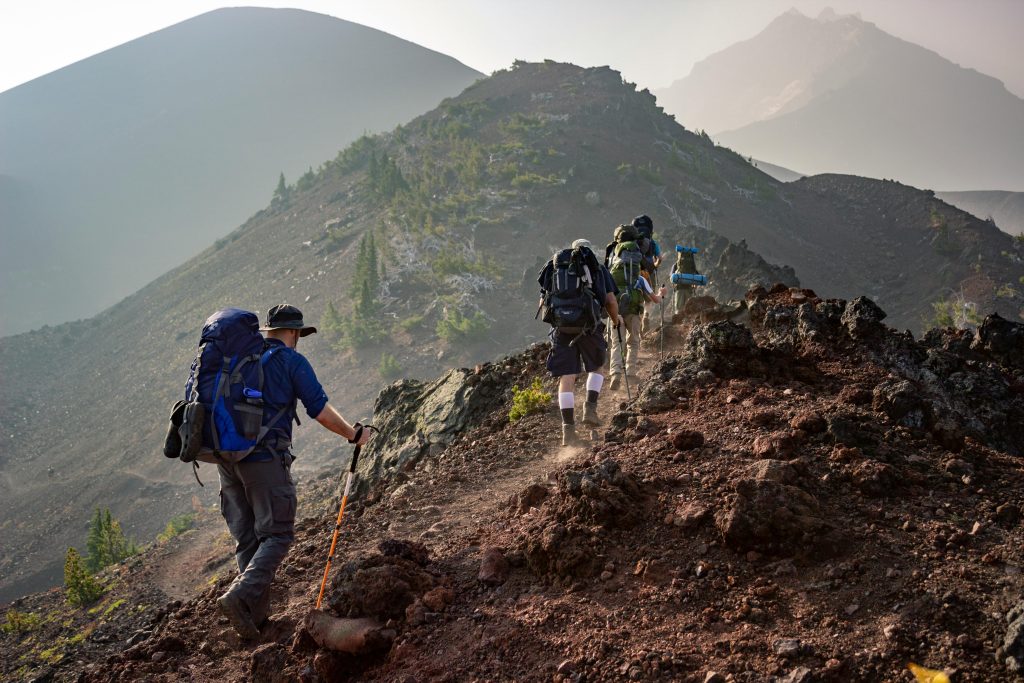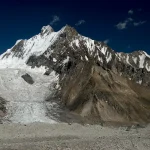Skyang Kangri, also known as Staircase Peak, stands at an impressive height of 7,545 meters (24,760 feet) in the Karakoram Range of Pakistan. Despite its proximity to the famous K2, this majestic peak remains lesser-known, offering a unique and serene challenge for adventurous mountaineers.
The Meaning Behind the Name
The name “Skyang Kangri” originates from the Balti language, where “Skyang” translates to “wild horse” and “Kangri” means “mountain.” This fitting name reflects the rugged, untamed beauty of the peak and its challenging nature, making it a dream destination for experienced climbers.
Geographic Location and Neighboring Peaks
Skyang Kangri is nestled near the Baltoro Glacier, one of the largest glaciers outside the polar regions. It lies at the confluence of the Siachen and Baltoro Glaciers, surrounded by towering giants like K2, Broad Peak, and Gasherbrum I and II. This awe-inspiring landscape provides climbers with breathtaking views and a true sense of wilderness.
A Brief History of Skyang Kangri
The first successful ascent of Skyang Kangri was accomplished in 1976 by a Japanese expedition led by Kazuo Tokunaga. The team climbed via the Northeast Ridge, a route still considered the most accessible for summiting the peak. Despite this achievement, the mountain sees relatively few ascents, primarily due to its challenging terrain and remote location.
Challenges of Climbing Skyang Kangri
Skyang Kangri is a demanding climb requiring a combination of technical expertise and physical endurance.
- Technical Difficulties: The ascent involves navigating steep ice slopes, crevassed glaciers, and narrow ridges.
- Harsh Weather: Climbers face extreme cold, high winds, and sudden snowstorms.
- Remote Location: Reaching the base camp requires a grueling trek through the Baltoro Glacier, adding to the challenge.
Best Time to Climb

The ideal climbing season is between June and August when the weather is relatively stable. However, even during this period, climbers must be prepared for sudden weather changes, a hallmark of the Karakoram Range.
Climatic Conditions
The climate on Skyang Kangri is unforgiving, with temperatures often plummeting below freezing, even in summer. High-altitude winds and frequent snowstorms further test climbers’ resilience and preparation.
Tips for Aspiring Climbers
- Technical Training: Gain experience in rock and ice climbing on similar terrains before attempting the peak.
- Acclimatization: Spend adequate time at lower altitudes to prevent altitude sickness.
- Physical Fitness: Build stamina and strength through regular training.
- Gear Preparation: Invest in high-quality equipment suitable for extreme conditions.
- Weather Monitoring: Stay updated on weather forecasts to plan your ascent safely.
Comparison: Skyang Kangri vs. Other Peaks
| Feature | Skyang Kangri | K2 | Gasherbrum I |
|---|---|---|---|
| Height | 7,545 m | 8,611 m | 8,080 m |
| First Ascent Year | 1976 | 1954 | 1958 |
| Difficulty | Very High | Extremely High | High |
| Ascents | Few | Several | Several |
Why Choose Skyang Kangri?
Skyang Kangri offers a unique experience for climbers seeking solitude and adventure. Its technical routes and remote location provide a true test of mountaineering skills while rewarding climbers with unparalleled views and a sense of achievement.
FAQs
Q: How long does the expedition take?
A: Typically, the expedition lasts 4–6 weeks, including the trek to the base camp, acclimatization, and the summit attempt.
Q: What is the most popular climbing route?
A: The Northeast Ridge, first ascended in 1976, remains the most commonly used route.
Q: Are avalanches a concern?
A: Yes, avalanches are a significant risk, especially during periods of heavy snowfall.
Q: Is Skyang Kangri suitable for beginners?
A: No, this peak is recommended only for experienced climbers due to its technical difficulties and harsh conditions.
Additional Resources
- For detailed climbing reports, visit The Himalayan Club.
- Explore expedition archives at The Alpine Club Library.
Conclusion
Skyang Kangri, with its wild and untamed beauty, stands as a hidden gem in the Karakoram Range. For seasoned climbers, it offers an unparalleled mix of challenge and reward. Its isolation, combined with the technical demands of the climb, makes it a perfect destination for those seeking to push their limits and explore one of the world’s most breathtaking mountain landscapes.

